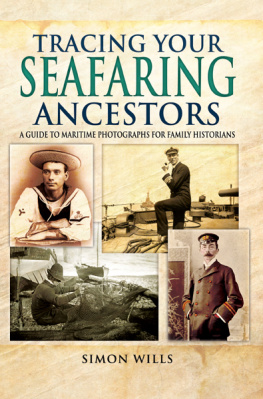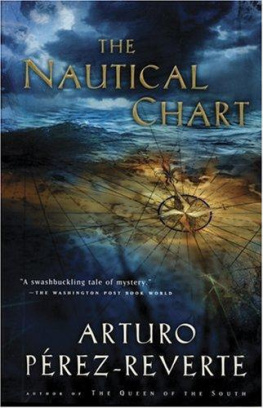11
DEATH AND DISASTER
.
Going to sea can be a hazardous venture. Your ship may be wrecked and you could go down with it. Alternatively, you might manage to scramble into a lifeboat, but if you are a great distance from the nearest land or your lifeboat is ill-equipped with food and water, you might as well have drowned in the first place. Failing that, you may be cast ashore on the proverbial deserted island, with little or no food and water.
If there are others sharing your predicament, there is the very real possibility of having to address "the delicate question which": who shall die in order that others may live? Philbrick puts it this way: "For as long as men had been sailing the world's oceans, famished sailors had been sustaining themselves on the remains of dead shipmates." Anyone interested in exploring this particular theme might consult Neil Hanson's The Custom of the Sea, a vivid and literate account of the famous trial concerning cannibalism after the sinking of the British yacht Mignonette in 1884; orin another sphere of activityPaul Piers Read's Alive: The Story of the Andes Survivors.
This chapter discusses examples of appalling shipwreck; cannibals who felt they had no alternative; and murderous criminal chaos in time of disaster. It ends with a brief commentary on man's inhumanity to man (a clich, to be sure, but as with all clichs it conceals more than just a modicum of truth).
USS SCORPION
"Under water men shall walk,
Shall ride, shall sleep, and talk."
ANONYMOUS, "THE PROPHECIE OF MOTHER SHIPTON"
Mother Shipton was famed as a prophetess and witch more than three hundred years ago. She was born "phenomenally ugly" in a cave in Yorkshire in 1487 or 1488, of peasant parents, baptized as Ursula Southiel (or Sowthiel or Southill), in 1512 married a Tony (or Toby) Shipton, builder, and died in 1561. The evidence for both her existence and skill at foretelling the future is about as reliable as that pertaining to any of the astrologers found in women's magazines today. Her first prophecy, published in a pamphlet in 1641, foretold the death of Cardinal Thomas Wolsey (14751530) and others, and she is credited with having predicted airplanes, the steam engine, the telegraph, the end of the world in 1881, and other such marvels, including submarines; a Life and Death of Mother Shipton appeared in 1677.
The U.S. Navy nuclear submarine Scorpion, 3,000 tons, Commander Francis Slattery, and nearly a hundred men disappeared some four hundred miles west of the Azores in the North Atlantic in May 1968; three months later her wreckage was discovered on the seabed and photographed by the research ship Mizar. She was lying at a depth of some 10,000 feet, her hull evidently crushed (technically, imploded) as a result of overwhelming external water pressure.
The Scorpion, launched in 1959, had a year earlier undergone an extensive overhaul in the naval shipyard at Norfolk, Virginia, and then successfully completed a number of sea trials. In March 1968 she was attached to the U.S. Sixth Fleet in the Mediterranean and two months later set out to return to Norfolk. On May 21, when she was about 250 miles west of the Azores, she transmitted a routine progress signal and that was the last message the world had from her.
In due course a search was put into operation, but of course nothing was found, except that her top-secret code name, Brandywine, was intercepted on May 29, with hasty radio intercepts putting her some 100 miles off the Norfolk coast. Eventually this was treated as a hoax, although it is curious that anyone outside naval operations should have access to the code name of an American warship, and a nuclear submarine at that. Clark claims that Newsweek magazine asserted at the time that the U.S. Navy possessed audiotapes of Scorpion being crushed, with a verbal message describing what was happening.
What brought about the demise of the Scorpion? No one can know for sure. It was likely the usual combination, in varying degrees, of bad weather, human error, and structural or mechanical failure, events that have accounted for lost ships and planes ever since people began building them. But this has not deterred The Bermuda Triangle (see ) adherents, who have advanced the following certainties to account for the loss of this vessel:
 the Scorpion's company was probably abducted by a UFO, with the submarine left behind as not worth anything, even as scrap metal
the Scorpion's company was probably abducted by a UFO, with the submarine left behind as not worth anything, even as scrap metal
 an Atlantean crystal-laser ray gave her a fatal zapping from a bunker deep in the seabed of the Atlantic (see )
an Atlantean crystal-laser ray gave her a fatal zapping from a bunker deep in the seabed of the Atlantic (see )
 the Scorpion stumbled into a parallel universe and, coupled with the antimatter that as everyone knows infests these places and the nuclear forces she was running on anyway, she simply atomized (as, unhappily, did the men in her); this is a theory favored by a subgroup of these otherworld enthusiasts (the wreckage that the Mizar photographed remains unexplained in this theory)
the Scorpion stumbled into a parallel universe and, coupled with the antimatter that as everyone knows infests these places and the nuclear forces she was running on anyway, she simply atomized (as, unhappily, did the men in her); this is a theory favored by a subgroup of these otherworld enthusiasts (the wreckage that the Mizar photographed remains unexplained in this theory)
HMS ROYAL GEORGE
"Toll for the brave
The brave! that are no more:
All sunk beneath the wave,
Fast by their native shore."
WILLIAM COWPER, "ON THE LOSS OF THE ROYAL GEORGE"
The loss in 1782 of the first-rate HMS Royal George is one of maritime history's best-known examples of a ship capsizing with great loss of life. (Two other better-known capsizes involving many lives lost are the Vasa, or Wasa, a wooden warship built in Swedenshe sank at the outset of her maiden voyage in 1628; and the Mary Rose, built by Henry VIII. In going out to engage the French fleet off Portsmouth in 1545, the Mary Rose was swamped through her lower deck gun portsshe sank almost immediately, losing almost her whole complement of some four hundred men.)
On August 29 the Royal George was lying at Spithead with almost all of her crew on board, together with a large number of women and children. Admiral Richard Kempenfelt had hoisted his flag in the vessel, which belonged to the fleet under the command of Lord Howe, who was planning for the speedy relief of Gibraltar. In the midst of these preparations the Royal George capsized and sank, drowning some eight hundred people, including Admiral Kempenfelt.
It appears that the ship was being given a "Parliament heel" in order to bring about some repairs to her timbers just below the waterline, which involved heeling her over until her lower gun ports were just above the level of the sea. (A Parliament heel is a makeshift way of careening a vessel; it is carried out by running all the guns to one side so she heels sufficiently; the name probably came about during the time of Cromwell's Parliament, 165358, when the procedure was in wide use. Other sources suggest that the name comes from the British navy's traditional contempt for Parliament, that institution being regarded as nothing more than a debating society in contrast to the strict discipline of naval life.)
The court martial that followed did not sheet home the blame for the disaster to a single cause, but it is likely that because of the state of her timbers (many of which were known to be decayed) a frame collapsed, thus allowing the lower tier of gun ports to be submerged. (In his poemsee aboveCowper attributes the loss of the Royal George to a "land breeze," a very unlikely scenario, but Cowper was not a sailor.) A great deal of water entered the ship very quickly, and down she went.










 the Scorpion's company was probably abducted by a UFO, with the submarine left behind as not worth anything, even as scrap metal
the Scorpion's company was probably abducted by a UFO, with the submarine left behind as not worth anything, even as scrap metal